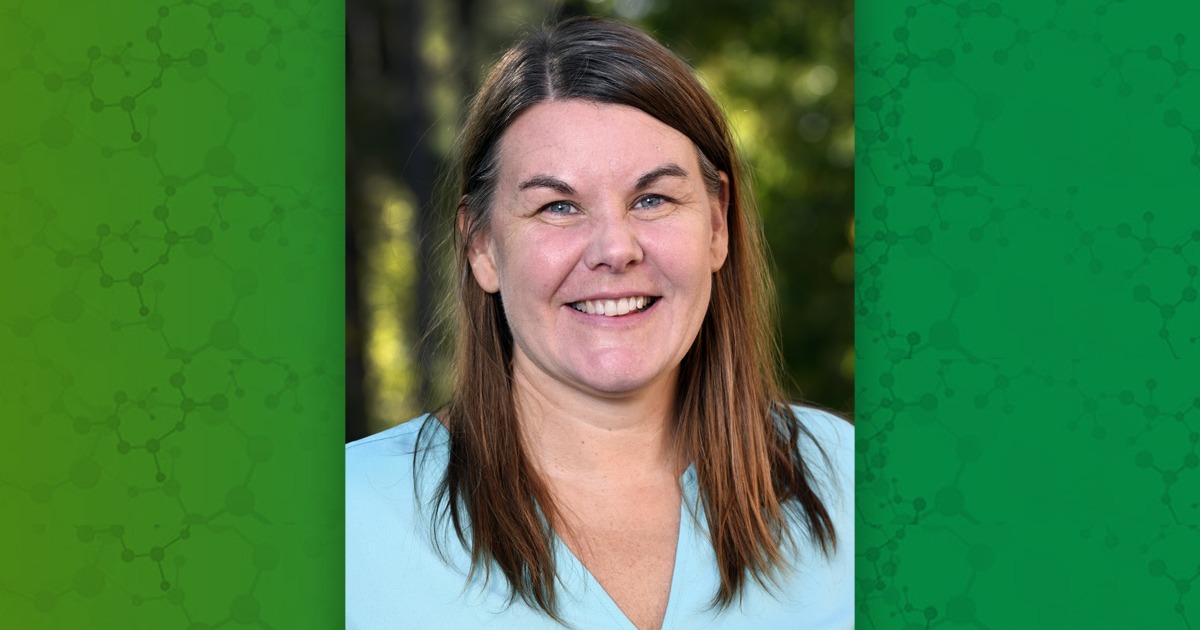NIEHS scientists met with researchers from around the world at two April meetings focused on improving developmental neurotoxicity (DNT) testing, which is the process of testing chemicals to determine whether they may interfere with nervous system development in humans.
The Fifth International Conference on Developmental Neurotoxicity Testing (DNT5) was held April 7-10 in Konstanz, Germany. Following the DNT5 meeting, a group of experts working to advance such testing in vitro met, thanks to support from the Organisation for Economic Co-operation and Development (OECD).
Helena Hogberg, Ph.D., attended both meetings and served on the organizing committee for DNT5. Environmental Factor spoke with Hogberg about the meetings in the context of NIEHS activities related to DNT.
EF: What were the goals of these meetings, and who attended?
Hogberg: Both meetings were focused on new approach methodologies (NAMs) to replace animal experiments for testing chemicals that might cause DNT. Specifically, they focused on what needs to be done to advance NAMs so they can be used for regulatory testing of chemicals, pesticides, and consumer products.
About 80 people, representing academia, regulatory agencies, and industry from all over the world, attended the public DNT5 meeting. The OECD meeting was smaller with the goal of identifying action items from DNT5 for the expert group. We also discussed planned revisions to last year’s OECD guidance document “Initial Recommendations on Evaluation of Data from the Developmental Neurotoxicity (DNT) In-Vitro Battery.”
EF: Why is DNT of interest to NIEHS, and what are our activities in that area?
Hogberg: There is concern that chemical exposure contributes to neurodevelopmental disorders. However, few chemicals have been tested for DNT using traditional animal tests because these tests are very resource-intensive in cost, time, and number of animals. They also provide limited information on how chemicals induce DNT at the cellular level. Applying NAMs based on human biology to DNT testing would be more efficient and support a better understanding of how chemicals cause DNT in humans.
DNT is a complex endpoint, and there are a lot of ways a chemical can induce it. The OECD guidance document I mentioned identifies 17 different assays, which are types of lab tests, that could be used in combination to identify chemicals that could cause DNT. Data from multiple assays are needed to inform on a chemical’s hazard potential, and more testing of different kinds of chemicals is needed to know how to best combine these assays. The NIEHS Division of Translational Toxicology (DTT) is doing this testing, in coordination with the European Food Safety Authority and the U.S. Environmental Protection Agency.
EF: What did you learn at these meetings that might affect NIEHS activities going forward?
Hogberg: Most of the assays described in the guidance document need transferability studies done to show that labs — other than the labs that developed the assays — can perform them and get similar results. A lot of the conversations at these meetings focused on who might conduct these studies and how they might be done.
Here at NIEHS, the National Toxicology Program Interagency Center for the Evaluation of Alternative Toxicological Methods (NICEATM) has experience coordinating transferability studies. NICEATM also interacts regularly with U.S. federal agencies that would be interested in participating in or sponsoring such studies.
EF: Tell us about some of the NIEHS work presented at DNT5.
Hogberg: I gave a talk about DTT’s use of NAMs to screen chemicals and prioritize them for future DNT testing, as well as the development of integrated approaches to testing and assessment case studies for regulatory application. Jui-Hua Hsieh described how adding data from the zebrafish embryo behavior assay can complement data from the DNT In-Vitro Battery. Two posters presented by Jason Stanko and Chris McPherson described ongoing DNT work within the DTT. NICEATM also presented two posters, one describing a chemical set proposed for use in the transferability studies, and the other describing an approach to put in vitro chemical activity data into a human exposure context.

(Catherine Sprankle is a communications specialist for Inotiv, the contractor supporting NICEATM.)
Source link
factor.niehs.nih.gov

